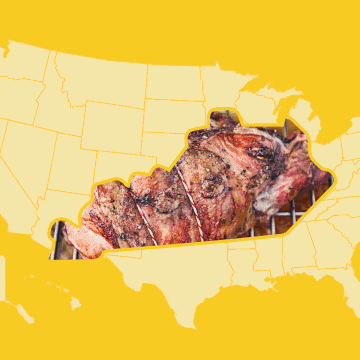"Dim sum to us is not just about the food," said Kenny Lau of the restaurant Furama Dim Sum in Chicago. "It is really about spending time with family, uniting with friends and those that you love, and enjoying each others' company."
But that's not to say the food is an afterthought. The traditional Chinese meal is made up of many small dishes meant to be shared and typically eaten around brunch time. Here are the basics of dim sum, from how to order it to the traditional dishes.
What is dim sum?
"Dim sum are small dishes—steamed, baked, or fried—made to be eaten with tea," said Doug Crowell of Bao and Noodle in New Orleans. "The meal is called yum cha, and the individual dishes are dim sum."
Each dish typically has three to four pieces, making it easy to share. When you visit a dim sum restaurant, you might notice a server pushing a steamer cart around the dining room. That's the traditional way dim sum is served. This way, you can see each dish before deciding what to order.
What's the history of dim sum?
"[In the 19th century], merchants who walked along the Silk Road for trade would stop by tea houses serving dim sum as a side dish," Lau said. These merchants would travel throughout the region, spreading the custom of dim sum around China.
How do you order dim sum?
When you sit down, you'll likely be given a sheet that lists the dishes on offer and a pencil. You mark this sheet with the dishes you want to order, and hand it to the server. If the restaurant has carts going to each table, you can look at each dish on the cart before marking your final decisions. The server then records the prices of all the dishes you selected to tally your bill.
Crowell recommends being patient. "Do not take everything that is rolling by," he said. "The menu is often rotating. If you get 10 plates right away, you will have cold food and regret when your favorite dish goes by and you couldn't take another bite." Lean into eating family-style and ask everyone at the table what they want. It's a marathon, not a sprint, Crowell said.
"We also like to pour tea for elders first before we pour tea for ourselves, and we never eat the last piece of a dish as we want our guests to have it!" Lau said. "Also, each table will generally have a separate chopstick that is for communal use for the different dim sum items."
What are typical dim sum dishes?
Shrimp dumplings, pork siu mai (a type of dumpling), steamed pork buns (fluffy buns stuffed with sticky pork), chicken feet, spareribs in black bean sauce, jiaozi dumplings (also called Chinese dumplings), cheong fun (steamed rice noodles), and turnip cake are all commonly found on dim sum menus.












